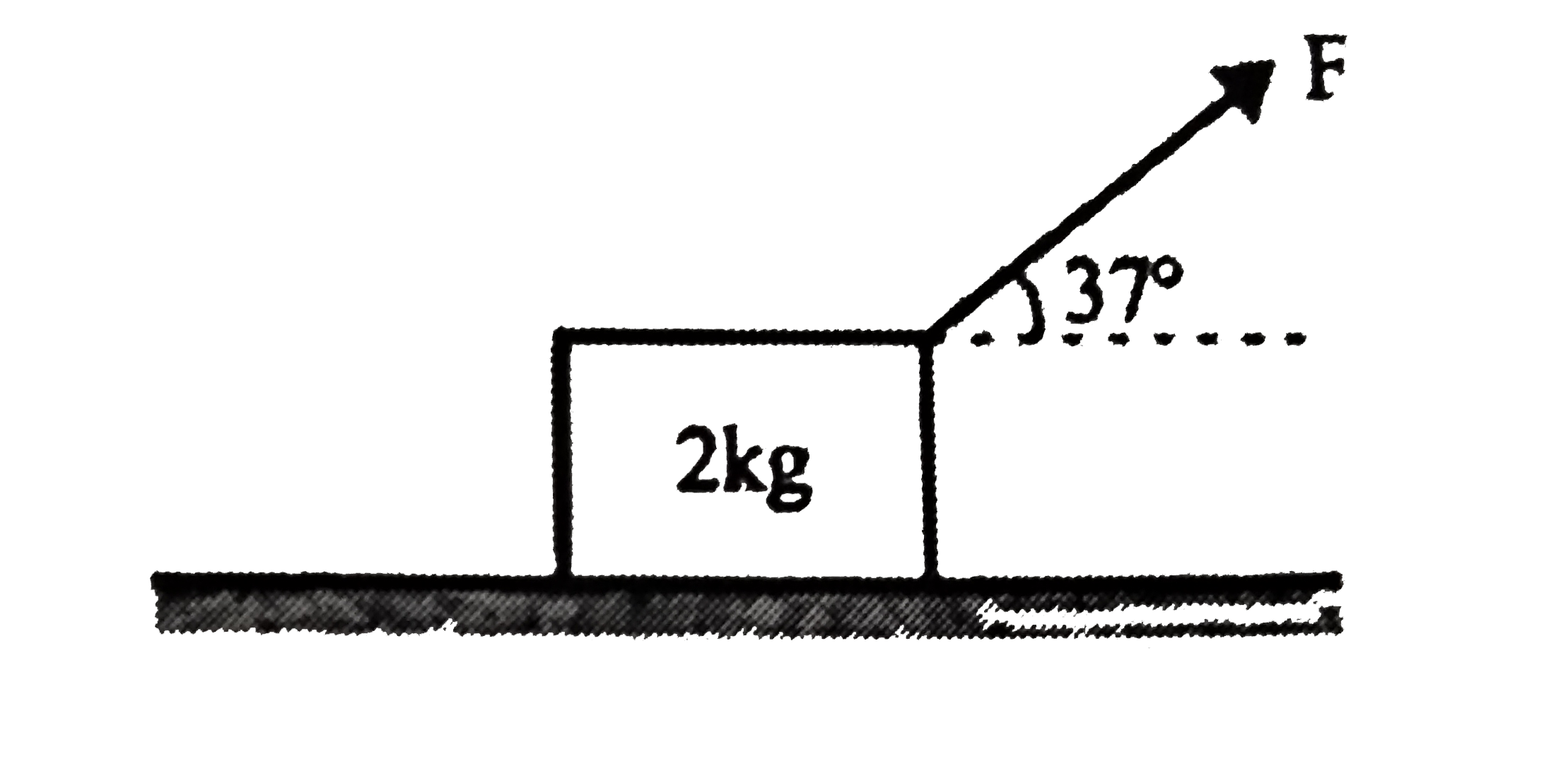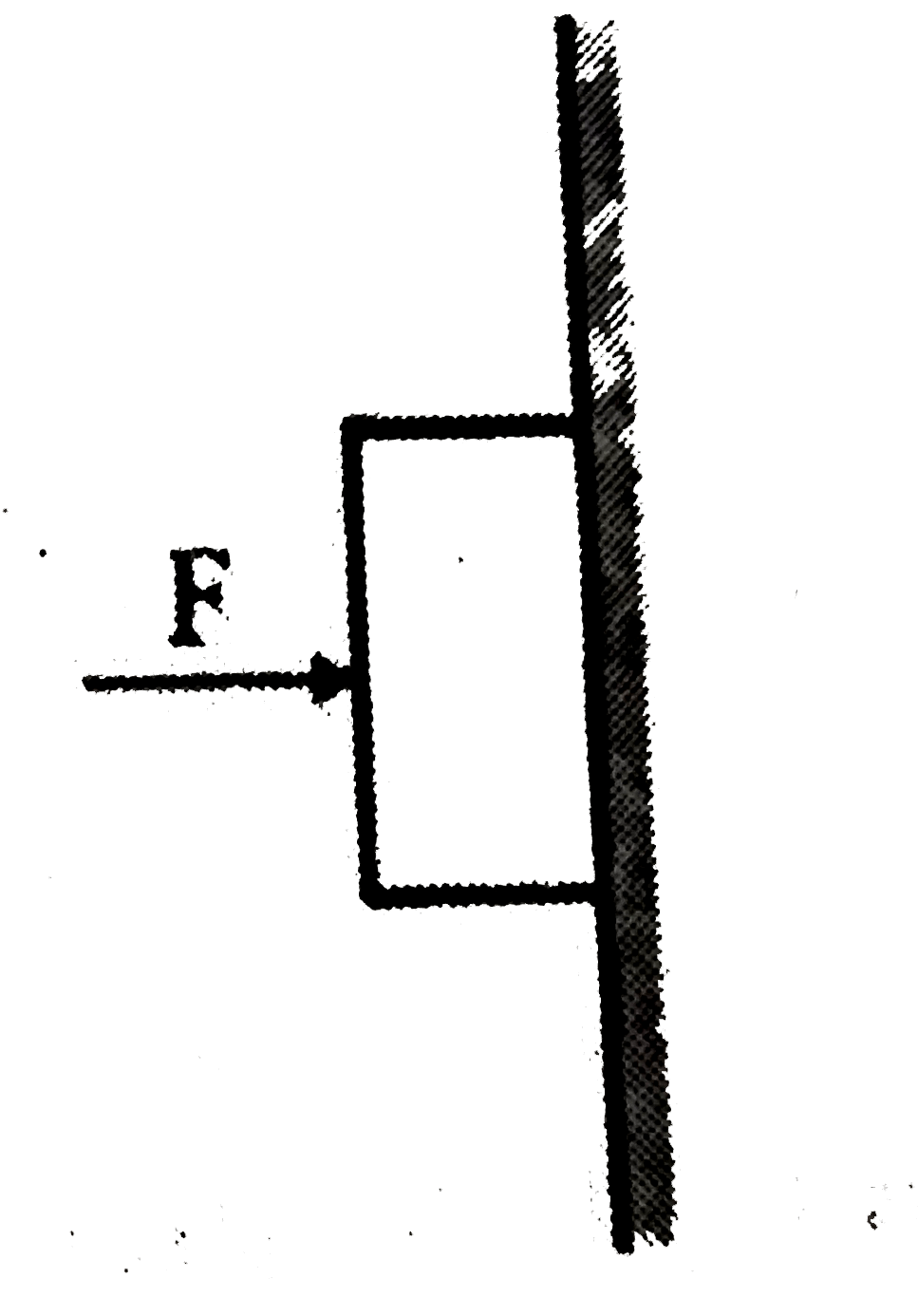A duster weighs 0.5N. It is pressed against a vertical board with a horizontal force of 11N, If the co-efficient of friction is 0.5 the minimum force that must be applied on the duster parallel to the board to move it upwards is
0.4 N
0.7 N
6 N
7 N
The correct Answer is:C
To solve the problem, we need to determine the minimum force that must be applied on the duster parallel to the board to move it upwards. Here are the steps to find the solution:
Step 1: Identify the Forces Acting on the Duster
- The weight of the duster (W) acting downwards = 0.5 N.
- The horizontal force (F_horizontal) pressing the duster against the board = 11 N.
- The coefficient of friction (μ) = 0.5.
Step 2: Calculate the Normal Force (N)
The normal force (N) exerted by the vertical board on the duster is equal to the horizontal force applied:
N=Fhorizontal=11N
Step 3: Calculate the Frictional Force (F_friction)
The frictional force (F_friction) can be calculated using the formula:
Ffriction=μ⋅N
Substituting the values:
Ffriction=0.5⋅11N=5.5N
Step 4: Determine the Total Force Required to Move the Duster Upwards
To move the duster upwards, we need to overcome both the weight of the duster and the frictional force. Therefore, the total force (F_total) required is:
Ftotal=W+Ffriction
Substituting the values:
Ftotal=0.5N+5.5N=6N
Conclusion
The minimum force that must be applied on the duster parallel to the board to move it upwards is 6 N.
---
- The weight of the duster (W) acting downwards = 0.5 N.
- The horizontal force (F_horizontal) pressing the duster against the board = 11 N.
- The coefficient of friction (μ) = 0.5.
The normal force (N) exerted by the vertical board on the duster is equal to the horizontal force applied:
N=Fhorizontal=11N
The frictional force (F_friction) can be calculated using the formula:
Ffriction=μ⋅N
Substituting the values:
Ffriction=0.5⋅11N=5.5N
To move the duster upwards, we need to overcome both the weight of the duster and the frictional force. Therefore, the total force (F_total) required is:
Ftotal=W+Ffriction
Substituting the values:
Ftotal=0.5N+5.5N=6N
The minimum force that must be applied on the duster parallel to the board to move it upwards is 6 N.
Topper's Solved these Questions
- LAWS OF MOTIONBOOK - AAKASH SERIESCHAPTER - LAWS OF MOTIONEXERCISE - EXERCISE - II
136 Videos
- GEOMETRICAL OPTICSBOOK - AAKASH SERIESCHAPTER - GEOMETRICAL OPTICSEXERCISE - ADDITIONAL PRACTICE EXERCISE (LEVEL-II PRACTICE SHEET (ADVANCED) INTEGER TYPE QUESTIONS)
10 Videos
- LOGIC GATESBOOK - AAKASH SERIESCHAPTER - LOGIC GATESEXERCISE - Exercise (Very Short Answer)
10 Videos
Similar Questions
An eraser weighing 2N is pressed against the black board with a force of 5N. If the coefficient of friction is 0.4. How much force parallel to the black board is required to slide the eraser upwards
View SolutionA body of mass 0.2 kg is pressed into a vertical wall normally with a horizontal force 20 N. Coefficient of friction is 0.9. Another horizontal force of 2N is applied on the body in the vertical plane. The frictional force acting on the body is K√2N. The value of K is
View SolutionA block of mass 2 kg is pushed against a rough vertical wall with a force of 40N. Coefficient of static friction being 0.5. Another horizontal force of 15 N, is applied on the block in a direction parallel to the wall. Will the block move? If yes in which direction? If no, find the frictional force exerted by the wall on the block.
View SolutionA block of mass 2 kg is pushed against a rough vertical wall with a force is 40 N. Coefficient of static friction being 0.5. Another horizontal force is 15 N, is applied on the block in a direction parallel to the wall. Will the block move? If yes in which direction? If no, find the frictional force exerted by the wall on the block.
View SolutionA block of mass 2 kg is kept on a rough horizontal floor an pulled with a force F. If the coefficient of friction is 0.5. then the minimum force required to move the block is :-

View SolutionA block of mass 1kg is pushed against a rough vertical wall with a force of 20N, coefficient of static friction being 14 Another horizontal force of 10N is applied on the block in a direction parallel to the wall. Will the block move? If yes, in which direction ? If no, find the frictional force exerted by the wall on the block. (g=10m/s2)
View SolutionA block of mass 20kg is placed on a rough horizontal plane and a horizontal force of 12N is applied. If coefficient of friction is 0.1 the frictional force acting on it is,
View SolutionA block of weight 5 N is pushed against a vertical wall by a force 12 N . The coefficient of friction between the wall and block is 0.6 . Find the magnitude of the force exerted by the wall on the block :
View SolutionA block of mass 1 kg is pressed against a wall by applying a horizontal force of 10N on the block. If the coefficient of friction between the block and the wall is 0.5, magnitude of the frictional force acting on the block is
View SolutionA block of mass 1 kg is held at rest against a rough vertical surface by pushing by a force F horizontally. The coefficient of friction is 0.5. When

View Solution
